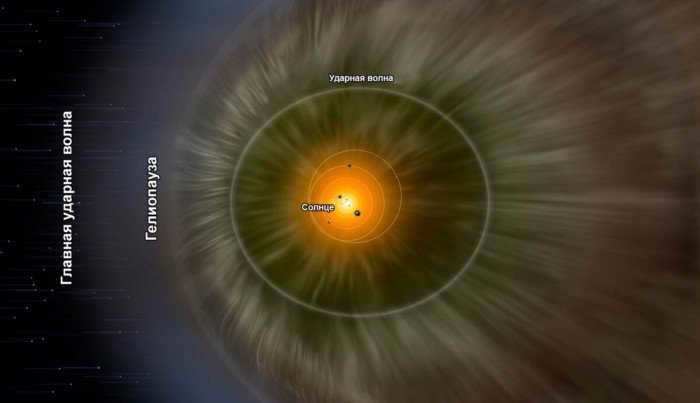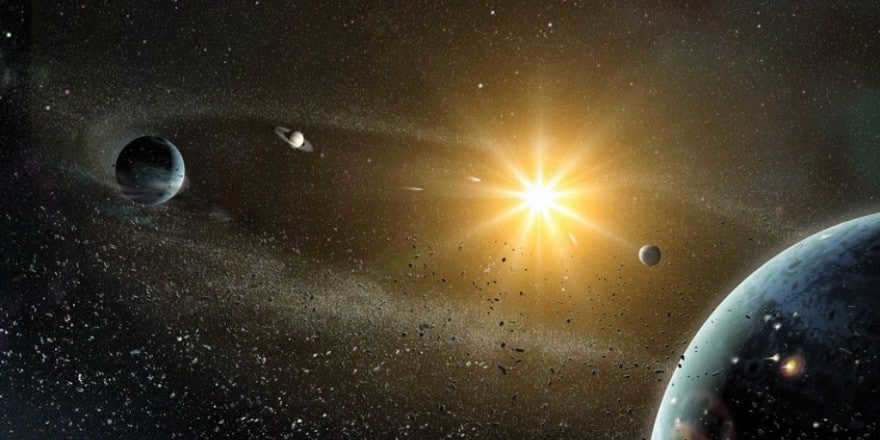
Where can we find the boundary where the new universe commences and the well-known solar system comes to a close? Typically, we confine our focus to Earth and its neighboring planets. However, let us venture out into our celestial abode, journeying as far away from our sun as possible, and explore the outermost reaches of our solar system, its very perimeter.
The planets of the solar system.
NASA’s computer illustration presents the planets within our solar system. The scale does not accurately depict the true orbits.
Boundaries, in the traditional sense, are determined by the sphere of influence. In this scenario, we refer to the gravitational force exerted by the star, which all other celestial bodies are subject to as they revolve around the Sun. Therefore, within the solar system, it is possible to visually identify multiple sectors where gravity gradually diminishes as the distance from the star increases.
Many individuals limit their perspective to the planets within the system, assuming that this marks the end. Officially, there are eight worlds (Pluto was reclassified as a dwarf planet in 2006), with Neptune being the final planet in the sequence.
This sector is separated into the internal and external systems. The initial classification encompasses the four nearest planets to the Sun in the Earth group, as well as the primary asteroid belt and concludes with the dwarf planet Ceres.
In the external group, you will find the massive gas and ice planets, including the theoretical Ninth Planet (Planet X), comets, and centaurs. On average, Neptune is located 4.55 billion kilometers away from the Sun.
Advancing in the direction of the Kuiper Belt
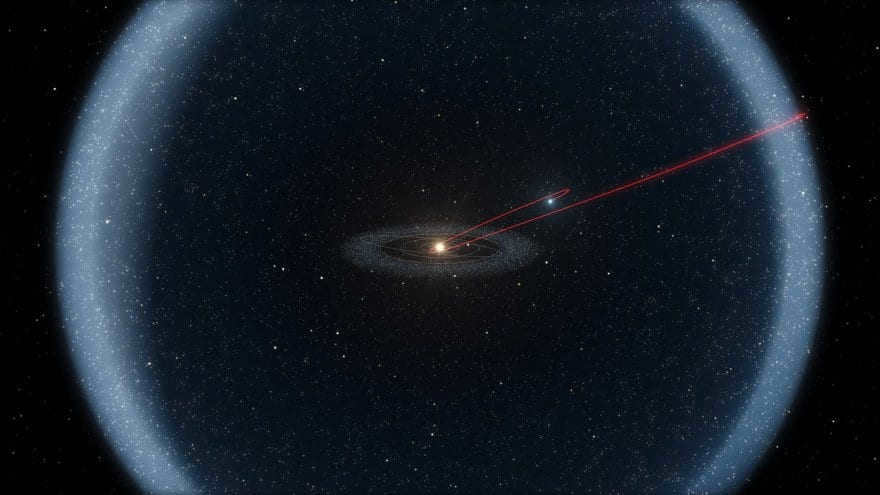
A comparison of the sizes of the inner solar system, the Kuiper Belt, and the Oort cloud.
As we pass Neptune, we enter a region of objects that are located beyond Neptune, known as trans-Neptunian objects. This area is not well-studied yet, but it is believed to be populated by small celestial bodies made up of ice and rocks.
Then, at a distance of 30 astronomical units from the Sun, we encounter the Kuiper Belt, which stretches out to about 55 astronomical units. The Kuiper Belt is essentially an asteroid belt that we have observed between the inner and outer solar system, but it is 20 times wider and can have a mass up to 200 times greater.
The Kuiper belt is a region that contains numerous icy objects, as well as at least four dwarf planets, namely Pluto, Haumea, Makemake, and Eridus. Additionally, it is also home to a scattered disk. Scientists believe that a significant number of short-period comets, which have an orbital period of less than 200 years, originate from this region and make their way towards us.
Entering the Heliopause
Once we surpass the Kuiper Belt, the delineation of interstellar space becomes less certain. We are gradually venturing into a region surrounding the Sun known as the heliosphere. Within this realm, the plasma of the solar wind hurtles towards our star at supersonic speeds.
At a distance of 85-95 astronomical units from the Sun, the solar wind begins to decelerate, and a shock wave materializes. This was the threshold that the spacecraft Voyager 1 and Voyager 2 crossed in 2004 and 2007, respectively.
The enigmatic Oort cloud
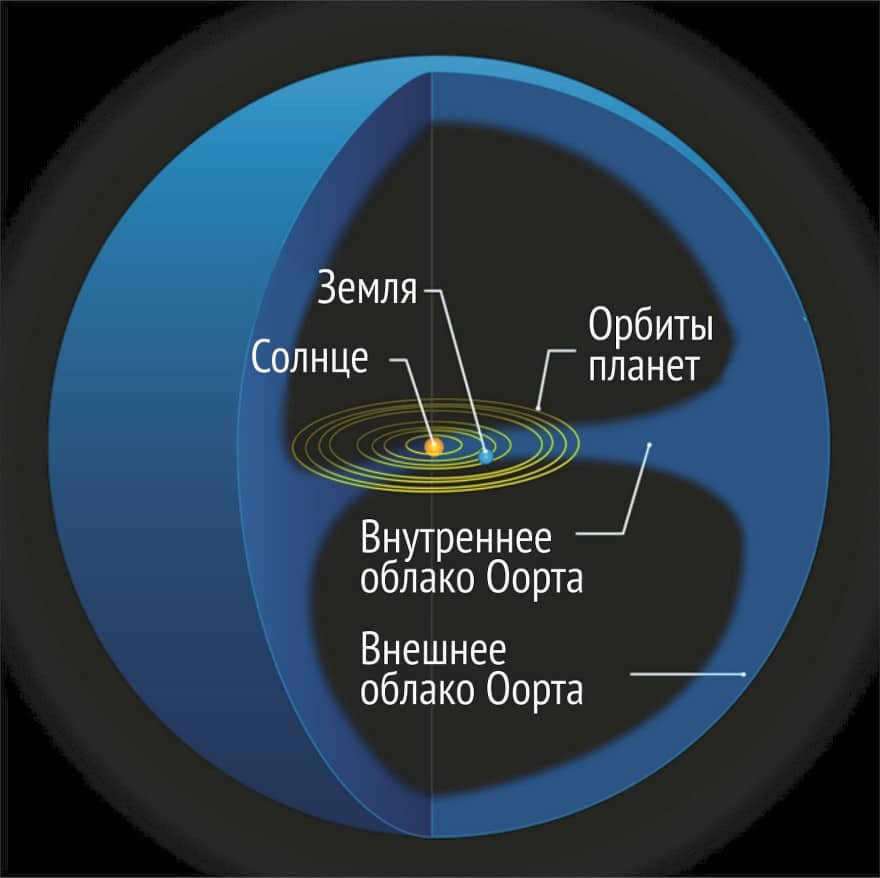
This area is still a theoretical region that could potentially serve as a sanctuary for comets with long orbital periods. It is thought to commence at a distance of roughly 50,000 astronomical units from the Sun and stretches all the way to 100,000 astronomical units. The Oort cloud takes on a spherical shape and has the capacity to accommodate trillions of frozen celestial bodies. There are some who speculate that sizable planets, and even a hypothetical Planet X, might be concealed within its depths, although the likelihood of this is exceedingly remote.
The ultimate frontiers
No spaceship has successfully traversed interstellar space and reached beyond the Oort cloud. Therefore, scientists are left with speculation. One hypothesis suggests the existence of a boundary where the Sun’s celestial partner, Nemesis, may reside. However, no concrete evidence has been found to support this claim. Currently, it is widely accepted that the gravitational influence of the Sun extends up to 125,000 AU, which can be regarded as the outermost reaches of the solar system.
P.S.
Voyager will not arrive at the Oort cloud for another 300 years, so our generation will not have the opportunity to celebrate this incredible event. The magnitude of this achievement is truly mind-boggling, and it only represents the boundaries of our own solar system. Just think about the entire Milky Way galaxy, which exists within a cluster, which in turn is part of even larger structures.
Contrary to the conventional theories about the appearance of our solar system’s “barrier,” the reality is far more intricate and fascinating. Depending on the theory being observed, the size of the heliosphere can vary on a cosmic scale, providing researchers with an endless array of possibilities.
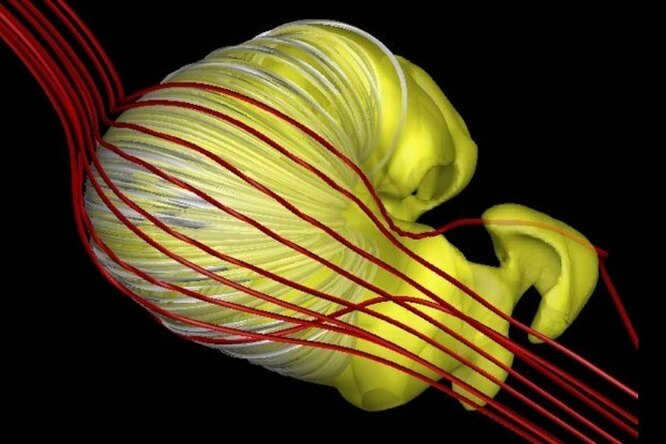
As time goes on, the information we learn in school about the solar system and interplanetary space tends to slip from our minds, as it doesn’t serve a practical purpose. Memorizing the order of the planets, the number of days in their calendars, the speed of light, and the concept of the heliosphere may only come in handy during a casual conversation, where one can impress their interlocutor with their knowledge.
Similar to Sherlock Holmes, who did not object to the geocentric model of the Universe, contemporary individuals, for the most part, neglect to store in their “attic” a myriad of other intriguing pieces of information, such as the composition of the heliosphere in the solar system. Yet, comprehending the interconnection of various particles in space as a whole, and specifically the heliosphere of the Sun, enables us to effectively examine their impact on our lives, which can prove advantageous, especially for those who are affected by changes in weather.
Composition of the Solar System’s Heliosphere
The heliosphere, a bubble of stellar wind, is a crucial element of our solar system. Although it cannot be observed with the naked eye, it serves as a protective barrier for both the Sun and the surrounding planets.
Each planet in our solar system, including Earth, is enveloped by its own “bubble” of solar wind, emitted by the Sun at supersonic speeds. This phenomenon is not unique to our star, as it occurs with every star in space. These winds are similarly referred to as the stellar winds of other stars. Comprised of particles, the solar wind creates an invisible magnetic field that shields us from the rest of interstellar space. This expansive bubble of stellar gas is known as the heliosphere.
For many years, astronomers have been studying the radiation and magnetism of this system, constructing a three-dimensional representation of the Sun’s heliosphere in order to determine its shape.
Previously, researchers believed that the heliosphere resembled either a comet or a wind sock. As a result, the boundaries of the heliosphere are depicted as having a rounded front end and a tail at the opposite end.
What is the boundary of the heliosphere?
We are aware that the solar wind initially travels at a speed of 4 million kilometers per hour. As it moves away from its source, it gradually encounters the pressure of interstellar space, while also influencing it by pushing deep into space. The heliopause, which marks the boundary of the heliosphere, is formed when these internal and external pressures reach a state of equilibrium.
However, a valid question arises – at what distance does this equilibrium occur? The answer to this question can be found in a model developed in 2020 through collaboration among experts from several universities. This model incorporates almost all of the currently known theories and provides insights into the size and appearance of the Sun’s heliosphere.
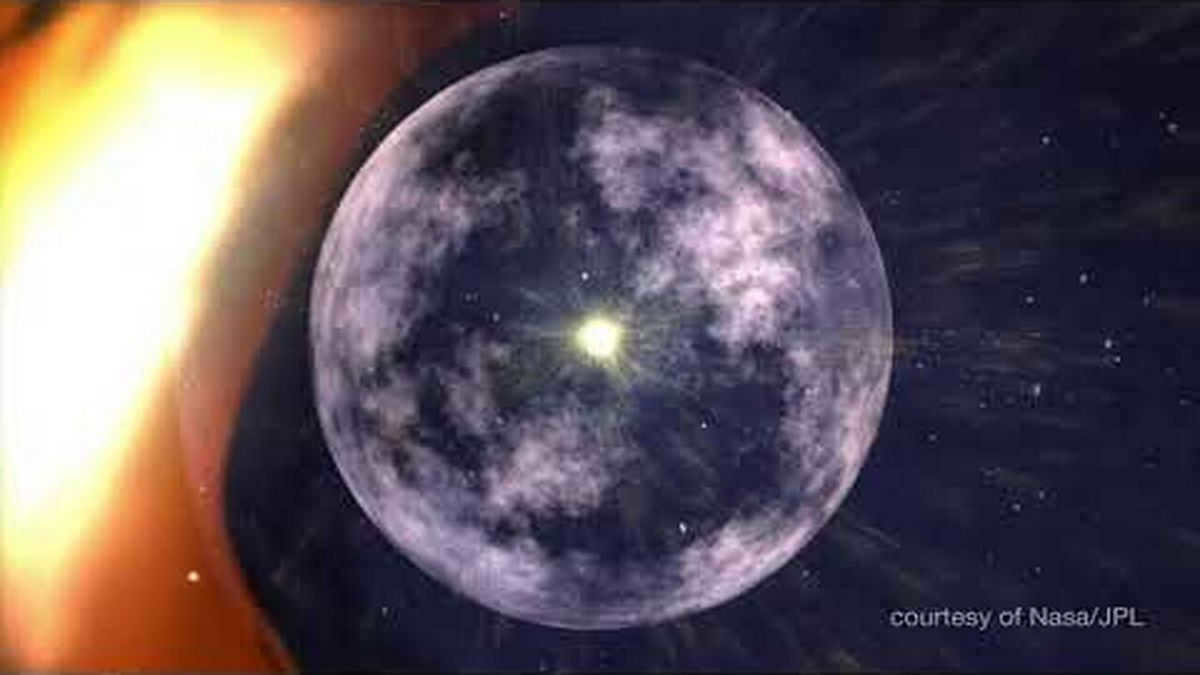
In recent times, along with the aforementioned two hypotheses regarding the limits and dimensions of the Sun’s heliosphere, two alternative forms have come to the forefront as the most plausible according to scientific analysis. In 2015, information gathered from the Voyager 1 spacecraft suggested the existence of two appendages that gave the heliosphere the appearance of an unusual “croissant.” Subsequently, two years later, data from the Cassini mission indicated that the concept of tails should be discarded altogether, transforming the heliosphere into a colossal beach ball.
"Accepting this type of change is not an easy task. The scientific community in this field has operated under the assumption for over 55 years that the heliosphere resembles the tail of a comet," states Tom Krimigis, who conducted experiments on the Cassini and Voyager missions. However, it appears that our assumptions may need to be reevaluated once again. This is because, according to physicists’ proposed model, the Sun’s heliosphere could potentially have the shape of a deflated beach ball or a bulging croissant. How is this possible? It all boils down to how and where one defines its boundary. The heliosphere is believed to extend over twice the distance of Pluto. At this distance, the solar wind constantly interacts with interstellar matter, acting as a shield against charged particles that could otherwise permeate the solar system. Nonetheless, determining the exact location of this heliospheric boundary is akin to determining the perfect shade of gray to distinguish between black and white."
Despite being difficult to measure, as it has been concealed by the Sun’s heliosphere, it is important to recognize that it serves as the forefront of safeguarding our shared habitat from the adverse effects of interstellar space.
However, by utilizing data obtained from the New Horizons spacecraft, which is currently venturing into the depths of space beyond Pluto, astronomers have finally discovered a method to differentiate between the two factions. Rather than assuming that all charged particles are homogeneous, this novel model divides them into two distinct categories: charged particles originating from the solar wind and neutral particles drifting within the heliosphere of the solar system.
Contrary to charged particles present in the interstellar region, these uncharged “absorbing ions” have the ability to effortlessly traverse the Sun’s heliosphere before losing their electrons. The research team managed to ascertain the structure of the heliosphere by comparing the temperature, density, and velocity of these absorbing ions with solar waves.
“The cooling of the heliosphere and its transformation into a smaller, more rounded shape is caused by the depletion of absorbing ions due to interactions with neutral hydrogen atoms in the interstellar medium. This model, which confirms the data obtained by Cassini, suggests that depending on the chosen boundary point, the Sun’s heliosphere can resemble both a descending sphere and a crescent moon. However, this is a basic model that may be subject to change in the future as astronomers gather more data to refine their theory and ensure it aligns with reality. What is already known is that the distance from the Sun to the front of the heliosphere is 120 astronomical units (1 a.u. being the distance from the Earth to the Sun), and the tail of the heliosphere stretches for 350 a.u.”
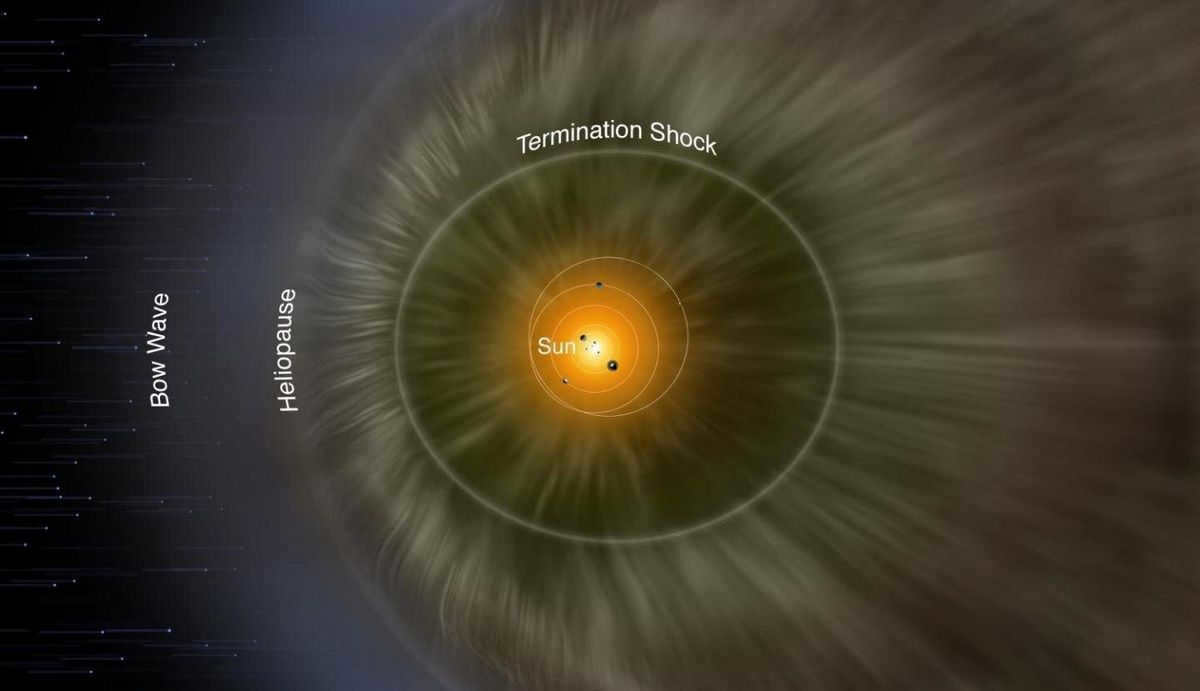

The heliosphere is a unique part of our solar system that includes the solar wind, electromagnetic fields generated by the Sun, and even a small amount of interstellar space. This structure plays a crucial role in shaping and protecting our planetary system.
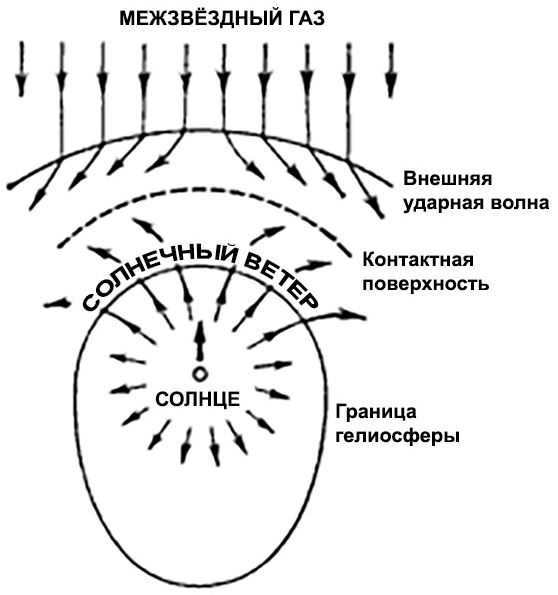
The heliosphere’s outer structure consists of:
What is the solar wind?
The entirety of space is filled with atoms, albeit in negligible concentrations. However, the only elementary particles present in stars are protons, neutrons, electrons, hadrons, and leptons.
Vortex motion is the driving force behind all processes in the Universe, gathering stars into galaxies. Any atom and any star, as long as they exist, serve as vortex centers.
Imagine a scenario where hadrons and leptons are composed of undiscovered particles, which we will refer to as mini-particles. These mini-particles form the building blocks of all the particles in our world, including atoms, and exist in the form of vortices. Stars, on the other hand, constantly undergo thermonuclear chain reactions, which manifest as a luminous glow that we observe.
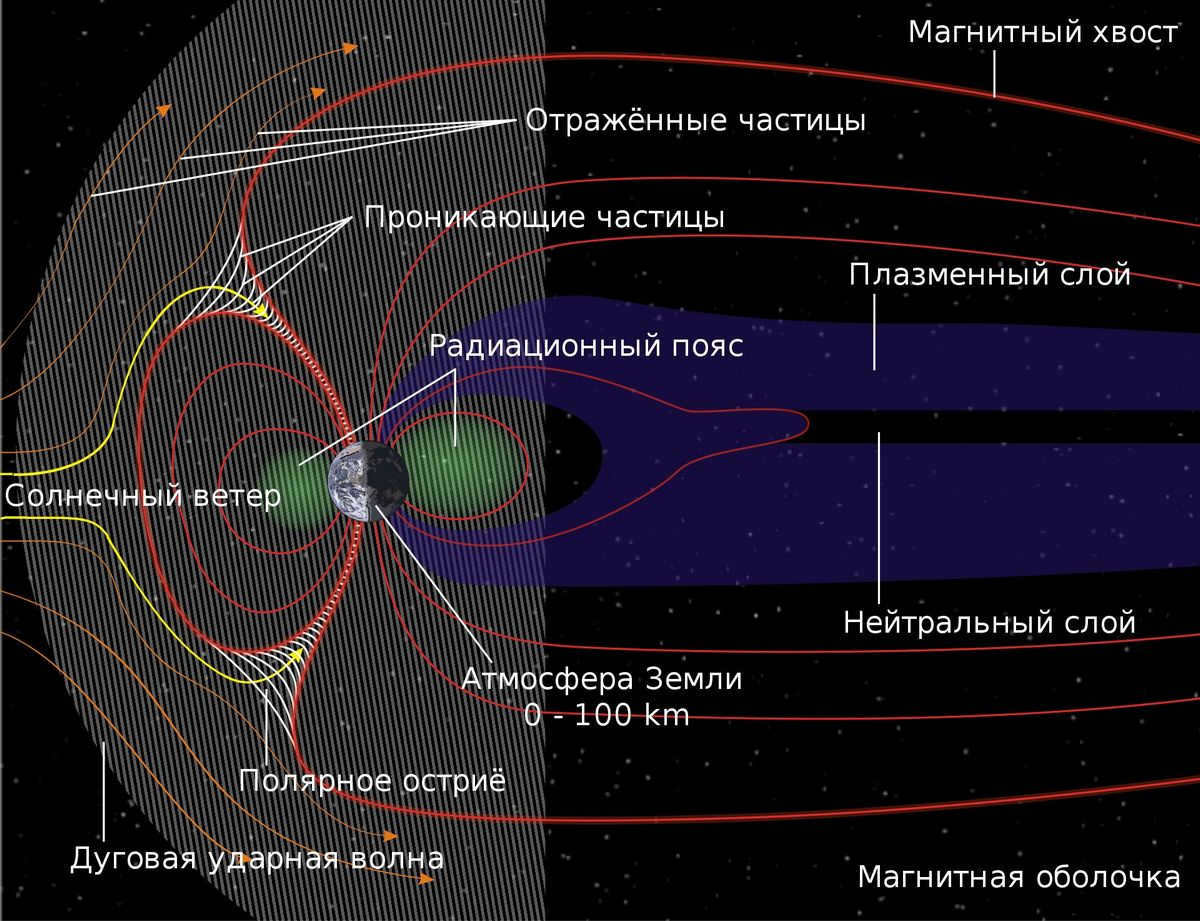
The vortex provides the star’s reactor with fresh fuel, allowing thermonuclear reactions to continue. This is made possible by the constant and uninterrupted flow of mini-particles through the stellar corona. As these particles make their way, they combine to form atomic nuclei and sometimes even atoms. This flow of particles is what we observe as the solar wind.
Typically, the solar wind consists of protons, helium nuclei, and electrons. There are also traces of heavy element nuclei present, albeit in small quantities. At a distance of approximately 150 million kilometers from the Sun (i.e., Earth’s distance), these particles move at speeds ranging from 300 to 800 km/s. The intensity of the solar wind, or solar cycles, varies and depends on the activity of the star, specifically its thermonuclear processes. The solar wind creates a protective cocoon around the Solar System known as the heliosphere.
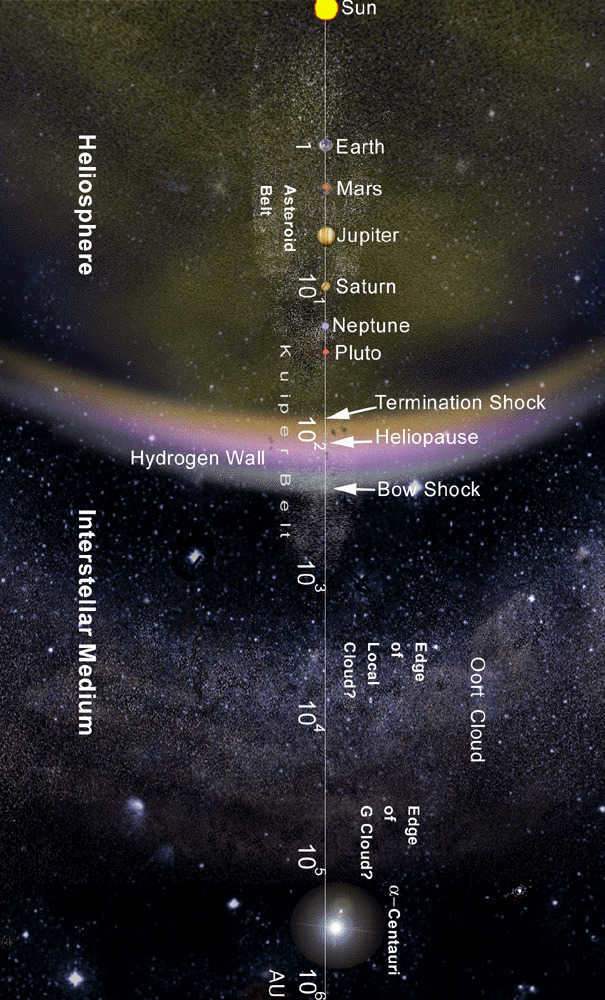
The internal composition of the heliosphere consists of:
- The leading shock wave (the point at which interstellar gas and the interstellar magnetic field collide with solar wind plasma, causing the interstellar wind to decrease in velocity).
- The heliopause (an area where the pressure of ionized particles from the solar wind and intergalactic matter equalize, resulting in a deceleration of particles and the formation of a shock wave).
- Heliomancy (as the Sun begins to interact with intergalactic matter, the heliosphere, resembling a fluttering skirt, becomes turbulent and elongated).
- The shock wave boundary (the region where ionized solar particles decrease in velocity).
The head shock wave is not an essential element of the heliosphere and may not be present if the speed of the incoming solar wind is not sufficiently high compared to the movement of the interstellar medium (84,000 km/h or lower). This is the conclusion reached by Voyager. However, if the wave does exist, it extends beyond the heliosphere.
The drop-shaped heliospheric mantle stretches from the nearest star to us, covering a distance of 80-100 astronomical units (an astronomical unit being the distance from the Earth to the Sun). The thickness of the mantle is greater on the side facing away from the wind and smaller on the windward side.
Form
Despite its name, the heliosphere is not a perfect sphere. Scientists continue to discuss its form to this day. It is accurate to state that in order to ascertain the form of the heliosphere, understanding its boundaries is necessary.
For an extended period, astrophysics was primarily focused on the theory that the heliosphere resembled a comet, with a “tail” pointing in the opposite direction of the Sun’s movement. However, the current understanding is that the heliosphere more closely resembles a crescent shape with rounded ends.
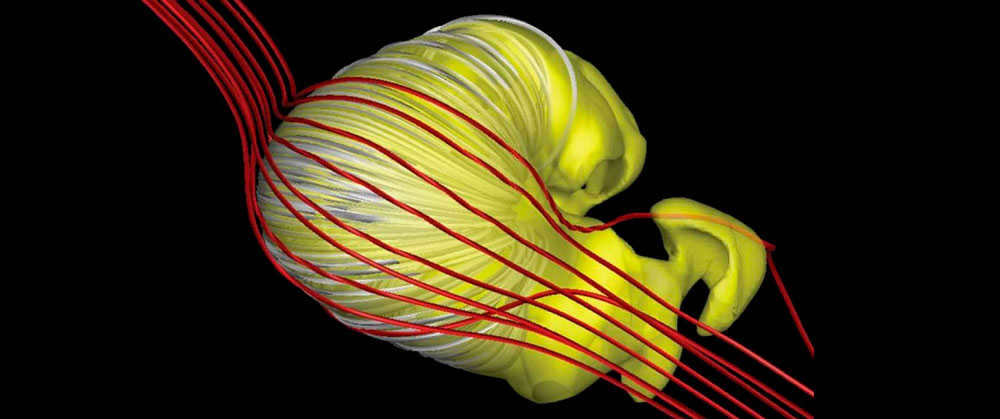
In 2015, astronomy professor Merav Ofer from Boston University and his colleague J. Drake from Maryland proposed a model based on data obtained by Voyager 1 and computer modeling. According to their theory, instead of the “tail” like a comet, the two streams of galactic radiation propagate from the “nose”. In 2017, scientists concluded, based on information received from the space probe “Cassini”, that the heliosphere still maintains its spherical shape.
Currently, the prevailing scientific perspective combines elements from both of these viewpoints. A model was put forth by M. Ofer, J. Drake, Gabor Toth from the University of Michigan, and Avi Leb from Harvard, suggesting that the shape of the heliosphere can vary between that of a crescent moon and a sphere, depending on the location of its boundary. These findings were published in the journal Nature Astronomy, volume 4, pages 675-683 (2020).
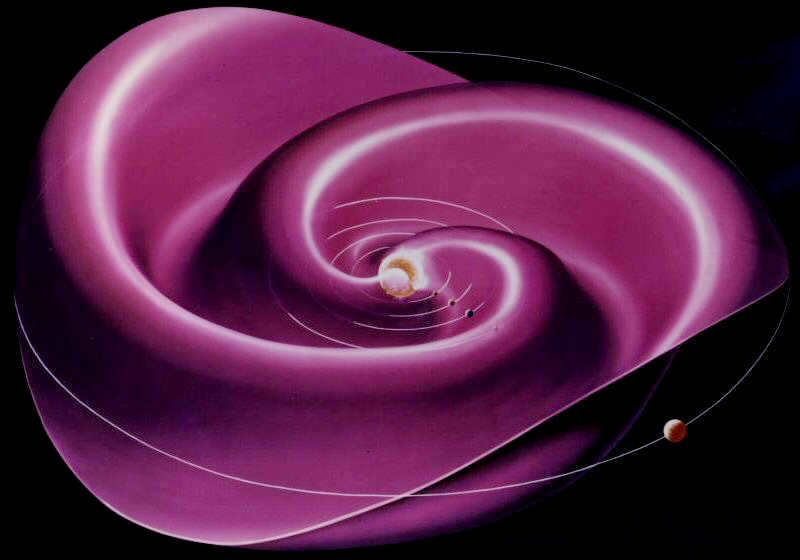
During the late 1950s, an American astrophysicist named Yu. Parker devised a hydrodynamic representation of the solar wind, which proposed that it accelerates and maintains a constant speed beyond the speed of sound.
A few years later, the Soviet spacecraft “Luna-1” and “Luna-2” confirmed the existence of the solar wind through experimental observation, thanks to the efforts of K.I. Gringauz and his team from the Institute of Space Research.
However, Y.N. Parker’s model suggests that the velocity of the solar plasma continues to increase infinitely, extending into the interstellar medium. Understanding the structure of the interstellar medium near the Sun, within a few parsecs, is crucial for studying the heliosphere.
Borderlines
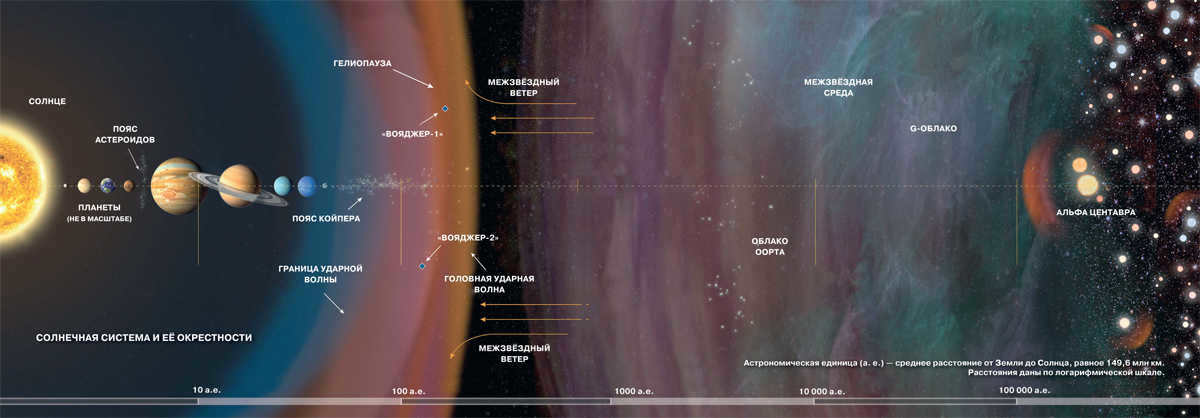
The boundaries of the heliosphere are still a topic of debate among scientists specializing in astrophysics.
Vladislav Valerievich Izmodenov, a Professor at Lomonosov Moscow State University and a Doctor of Physical and Mathematical Sciences, explains that the boundaries of the heliosphere differ from those of the Solar System. In fact, the heliosphere is smaller in size.
Our existence is within one of the local partially ionized interstellar clouds, which contains a relatively low number of particles (only 0.1-0.3/cm³) and has a temperature of approximately 50,000 K. These local clouds are situated within a larger, hotter, and even more rarified interstellar magnetic bubble.
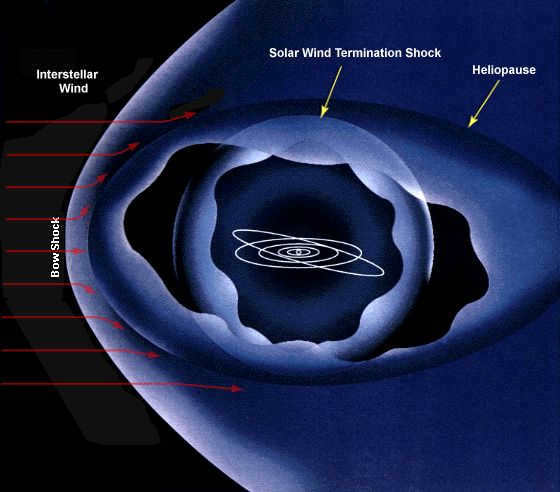
Then, a purely gas-dynamic issue arises – concerning the interaction between two supersonic flows. The solar wind is an expanding supersonic flow that collides with an incoming supersonic galactic flow.
It is evident that if the velocities of both mediums are sufficiently high, there will be no mixing, but rather a boundary (referred to as a contact gap in gas dynamics) that separates the solar wind from interstellar space. This boundary is known as the heliopause (or astropause for other stars).
The heliopause represents the strict boundary of the heliosphere. In 2012, Voyager 1 successfully crossed this boundary, marking the first instance in human history where a man-made object entered the interstellar medium.
Alternatively, we can envision the contact surface (heliopause) as a form of obstruction, constantly being inundated by interstellar gas from the outside and solar wind from the inside. One can think of this as a problem of supersonic flow around an object. When an object moves at high velocities, a shock wave is produced.
As the interstellar gas flows inward, a head shock wave is generated in the interstellar space. Simultaneously, the solar wind envelops the obstruction from within, resulting in the formation of a shock wave (heliospheric shock wave). The area between these two shock waves is known as the heliospheric shock layer.
In 1970, Soviet scientists V.B. Baranov, K.V. Krasnobaev, and A.G. Kulikovsky developed an analytical model to describe the distribution of plasma. This model quickly gained popularity within the scientific community and underwent continual improvements over time. Additional physical effects were incorporated into the model, and certain assumptions were revised or eliminated.
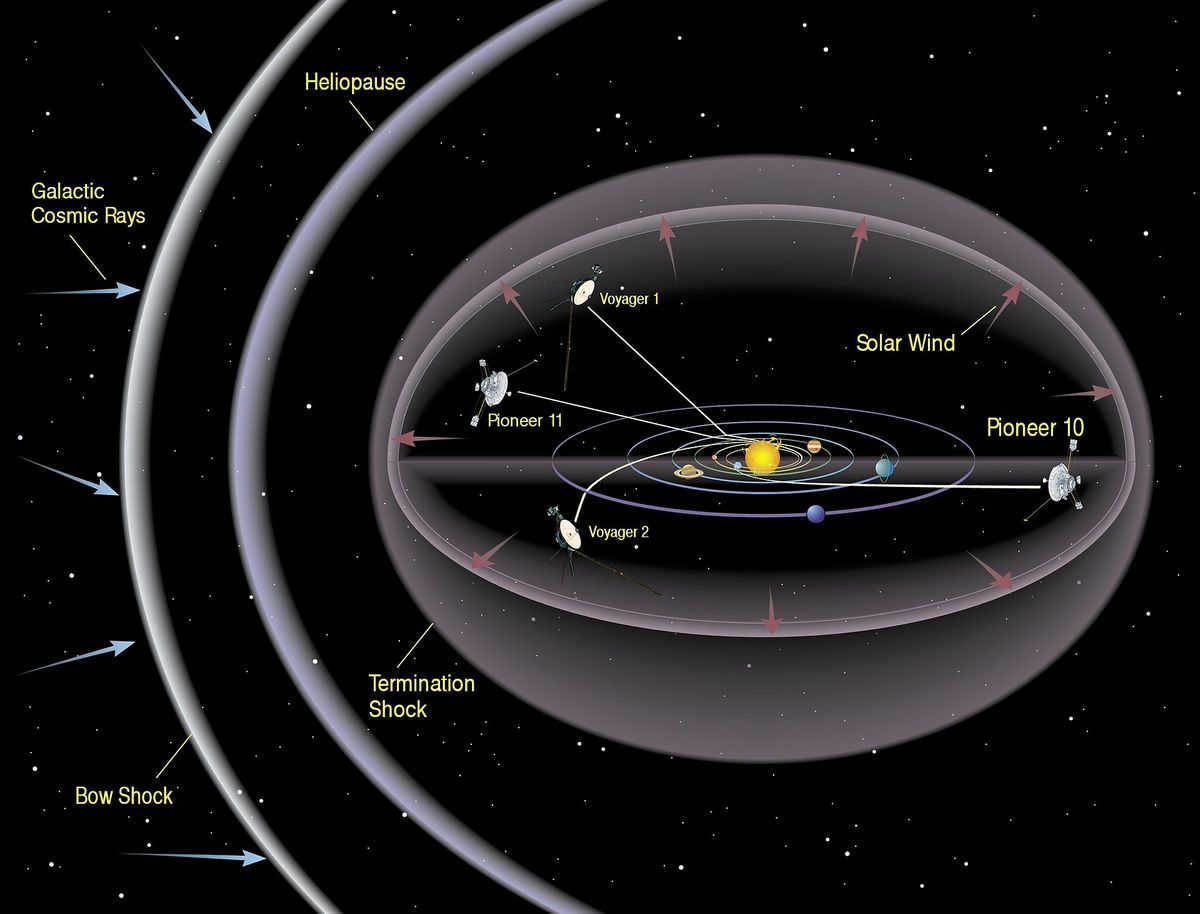
According to V.V. Izmodenov, the prevailing belief is that there exists an internal shock wave (known in English as the termination shock and in Russian as the heliospheric shock wave), the heliopause – which acts as the contact surface and serves as the actual boundary of the heliosphere – and an external shock wave. In 2004, “Voyager 1” successfully traversed the inner shock wave, revealing its location to be at a distance of 90 astronomical units (a.u.), which is 90 times further than the distance between our planet and the Sun. In 2012, “Voyager 1” crossed the heliopause at a distance of 122 a.u., a significantly closer distance than what was predicted by theoretical calculations. The reasons behind why the heliopause is situated so close remain unknown, posing a mystery that requires further investigation.
The heliosphere has a crucial role in safeguarding the planets within our solar system from the harmful effects of cosmic radiation. A. Leb firmly believes that comprehending the entirety of our surroundings necessitates a thorough examination of the heliosphere. This magnetic shield shields us from potentially damaging radiation, while also creating mutations that might prove advantageous for our survival. However, the impact of these mutations ultimately hinges on the dosage received.
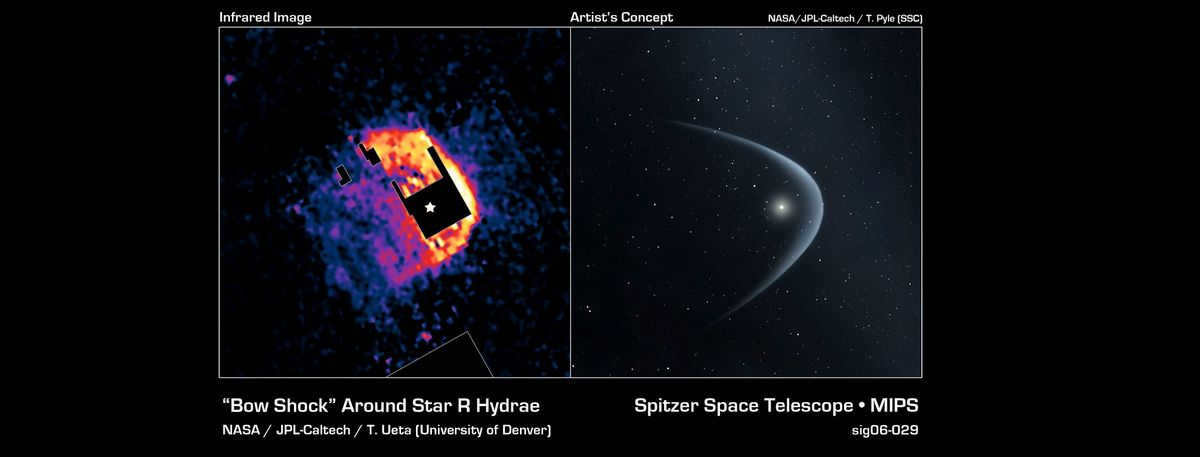
Currently, there is a wealth of knowledge about the heliosphere, but there are still many areas that remain unexplored. One of the biggest mysteries surrounds the boundaries of the heliosphere in space. This issue is of utmost importance as it holds the key to answering many other questions related to the heliosphere, such as its shape, characteristics, and the validity of scientific data.
Frequently asked questions
Let’s get acquainted with the most frequently asked questions that will help us better understand the topic:
The region located between the heliopause and the bow shock is known for its presence of hot gas. The hydrogen within this region is heated as a result of collisions between solar wind particles and interstellar matter, causing the kinetic energy of the particles to be converted into thermal energy. Some experts speculate that this boundary acts as a tangible barrier for the heliosphere.
In simpler terms, the heliosphere is the region that contains the solar wind. It consists of plasma emitted by our star at a high velocity, which is sufficient to overcome the gravitational pull of the sun.
The primary space probes utilized for studying the heliosphere are Voyager and Pioneer.
According to V.V. Izmodenov, a Professor at the Russian Academy of Sciences, the heliosphere is actually smaller in size compared to the Solar System. This means that the Voyagers have never actually crossed the boundaries of the Solar System, as was previously believed.
Once beyond Neptune, the velocity of the solar wind starts to decrease. The heliopause, on the other hand, starts near the orbit of Pluto.
We would like to inform you that as of March 4, 2022, changes have been made to the Criminal Code of the Russian Federation (Federal Law No. 32-FZ dated 04.03.2022). These changes introduce criminal liability for knowingly spreading false information about the utilization of the Russian Federation’s Armed Forces and engaging in public activities with the intention of discrediting the use of the Armed Forces. These measures are taken to safeguard the interests of the Russian Federation, its citizens, and to uphold international peace and security. Additionally, criminal liability is also established for advocating for the implementation of restrictive measures against the Russian Federation, its citizens, or Russian legal entities.
Space
Live
Related Posts
- Vendetta December 29, 2020, 10:44 pm Space → Voyagers have made an intriguing discovery of denser space beyond our solar system. What implications does this hold? 4
- Vendetta February 23, 2023, 19:50 Space → Unraveling the mysteries of enigmatic objects in the Solar System 0
- Axelerator March 12, 2022, 07:15 Interesting → A comprehensive exploration of gravity on various celestial bodies in our solar system 0
- Axelerator January 29, 2021, 08:02 Space → The precise calculation of the solar system’s center of gravity with a remarkable accuracy of 100 meters 0
- Vendetta October 11, 2021, 09:07 Space → Mind-boggling facts about the awe-inspiring Jupiter 0
Tags
Top Rated
Blogs

Out of all the immense expanse of the cosmos, the most extensively researched is our very own solar system – a collection of eight planets and various celestial bodies that revolve around the central star known as the Sun.
However, in the vastness of space, there are no distinct boundaries where one system ends and another begins. But what can be considered as the utmost extremity of our solar system? What does the actual edge of our world look like, and have any of Earth’s spacecraft ever ventured to this boundary?
The orbit of a dispersed disk
In astronomical terms, the Solar System comprises of the eight complete planets and trans-Neptunian objects (which encompass everything beyond the orbit of Neptune). The distance to Neptune is equivalent to 30 astronomical units (a.u.) or roughly 4.5 billion kilometers.
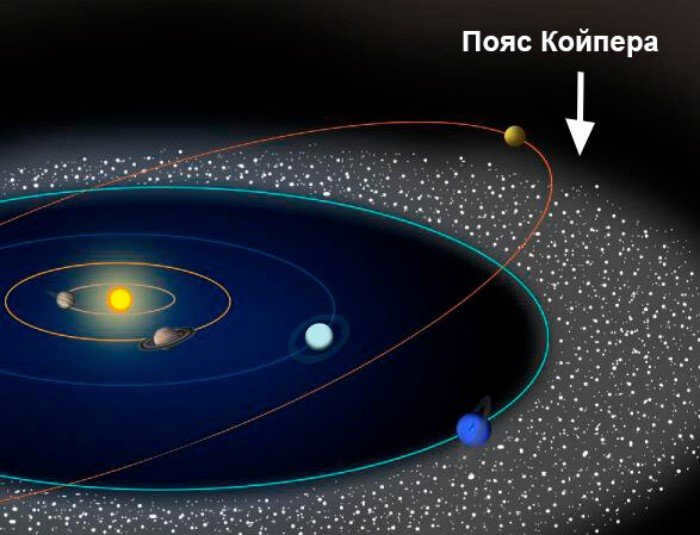
After passing through the Kuiper belt, we enter a scattered disk composed of fragmented icy pieces. As we venture deeper into space, the size of these particles gradually diminishes. The orbit of the scattered disk extends up to 100 astronomical units or approximately 15 billion kilometers. This boundary marks the outermost limit of material within our solar system, beyond which no objects exist.
If we consider the influence of the Sun, the boundary is pushed even farther.
The Sun emits a constant stream of plasma known as the solar wind, which travels at a velocity of 1200 km/s. As the solar wind travels outward, its speed gradually decreases. The boundary at which the pressure of the solar wind is balanced by the pressure of the interstellar medium is known as the heliopause.
